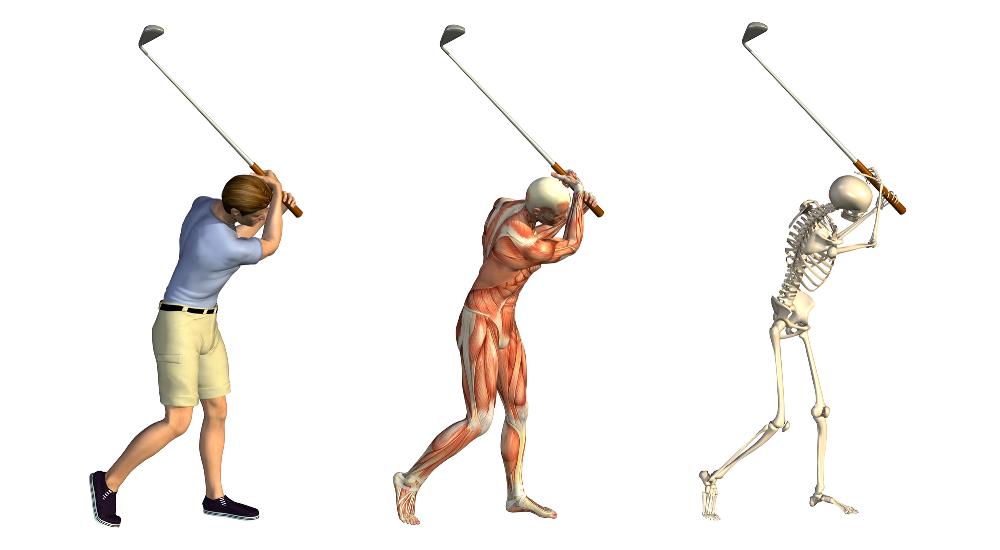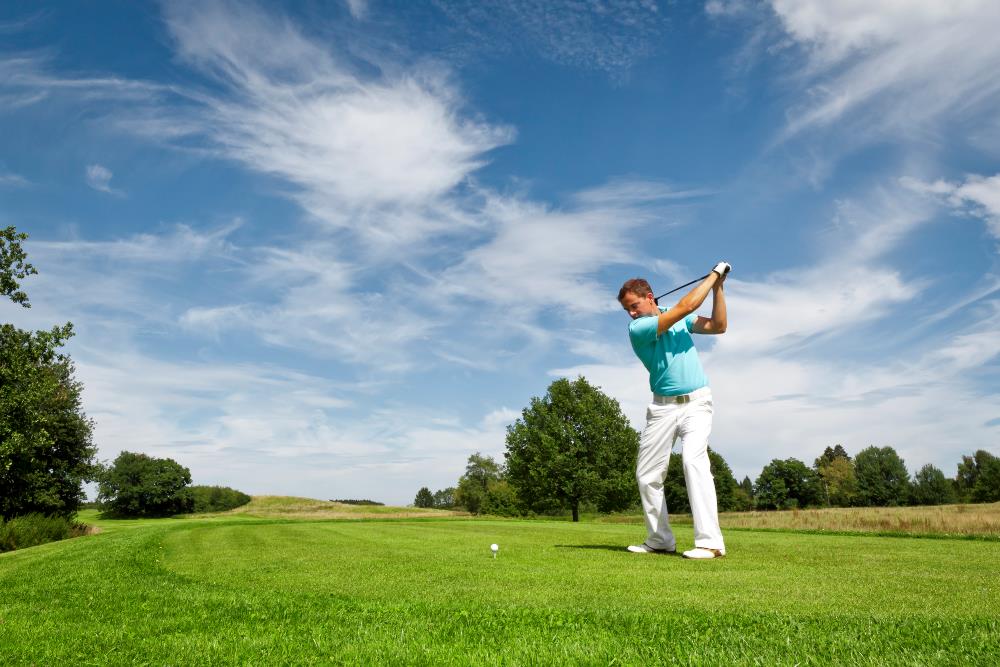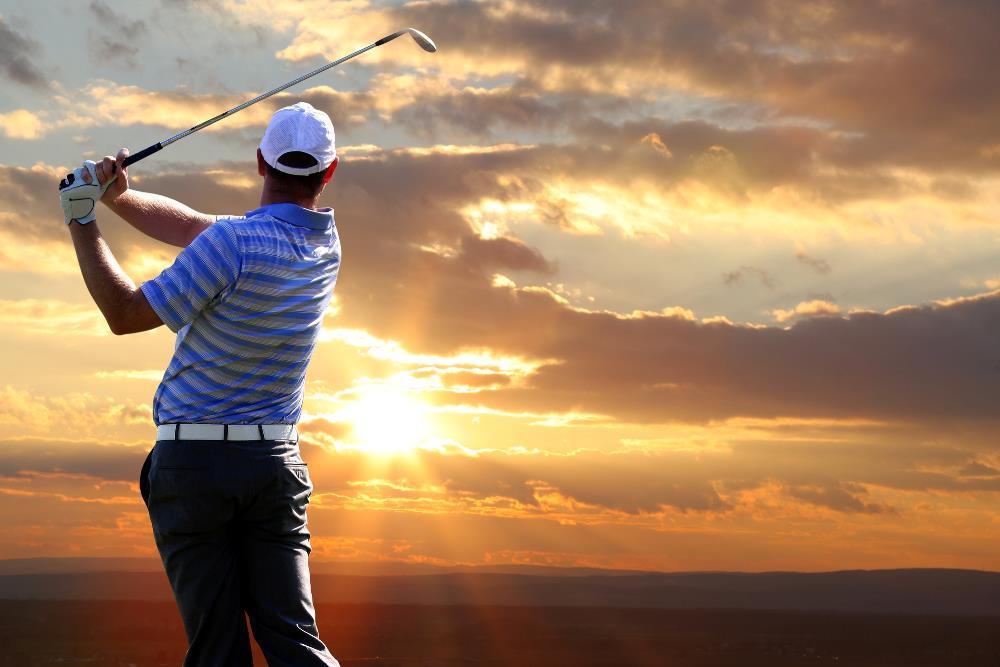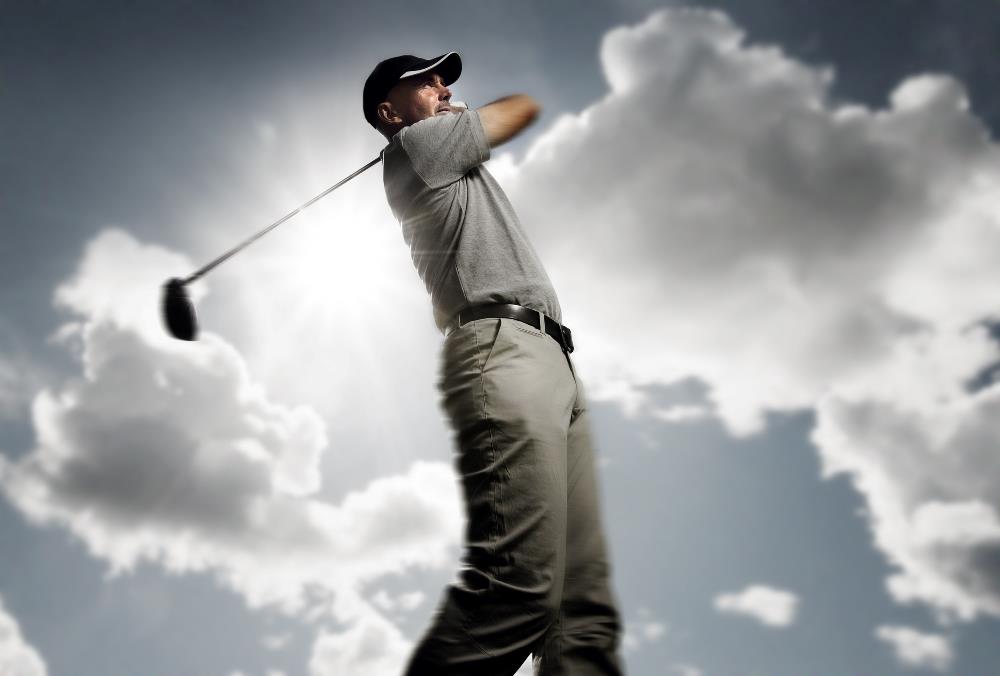The game of golf is more about technique than it is about raw strength. The way you swing the club affects whether or not the shot is successful, whether it’s a long drive or a simple putt on the green.
Beginners often make the error of exerting force during a swing with their arms. This excessive force typically causes the ball to travel too far, such as when putting, or completely off course, as with longer shots.
There is a better way to execute your golf swing, one that takes into account your body’s posture and alignment as well as the proper use of your muscles and joints, particularly your shoulders.
Standing In The Correct Position
Precision in a player’s every action is crucial to the sport of golf. Shot by shot, getting the ball into the hole requires proper body mechanics. Your footwork is the main building block of a good swing. The thigh muscles are some of the largest in the body, so even the smallest movement helps you get the perfect shot.
It’s crucial to check that you are standing at the ideal distance from the ball before taking a swing. No matter how good your swing is, you won’t be able to hit the ball in the desired direction if you are either too far or too close. This can be done by small positional adjustments and practise swings without actually hitting the ball.
You are in the ideal standing position when you are in the lowest part of your swing and the centre of the golf club face is lined up with the centre of the ball. This requires some back and forth adjustments for beginners, but with more practice, it almost becomes automatic.
Which Muscles are Used During a Golf Swing?

When you give it some serious thought, you’ll see that swinging a golf club involves a number of different muscle groups. Drives, iron shots on the fairways, chips into the green, and ultimately the final putt are all influenced by small and large muscles in the lower body, from the hips to the torso and shoulders.
It is simpler for muscles to produce energy the bigger they are. It follows that the chest, shoulders, and legs provide greater force than the arms and wrists do. Shots are greatly influenced by the shoulders, which are located above the torso. This is a result of their strong power and direct arm-to-golf club connection.
It’s crucial to use your biggest muscle groups to generate the most power in order to cover the greatest distance. The best golfers use their entire body when swinging the club, especially on longer drives. The following should be done to implement this:
Ensure that your feet are planted firmly, your arm motion is consistent, and you use as much of your lower body as you can by swinging it forward.
As a result, when you complete a shot with the arms in the highest position, your back foot will be raised. This is a good way to utilise the energy in your lower body and frequently indicates a successful long shot.
Such large motions are not usually necessary for shots taken from closer ranges. In that case, you can still use your body when making the swing, but your arms will be doing most of the work and your wrists will be holding the club firmly the entire time.
A golf strength and conditioning programme should be followed if you’re serious about getting the best shoulder turn for your golf swing.
Executing the Swing With the Shoulders

Execution of the swing itself is crucial after you have a firm grasp of your body’s position and how various muscle groups are involved. You risk having a loose and uncontrolled shot if you try to generate power solely with your arms. The shoulders are important in this situation.
Reversing the club is the first action. It’s crucial that you use your shoulders and not your arms to perform this. When moving the club back or bringing it forward to strike the ball, be careful to keep the shoulders in the same position.
While taking a swing, the arms are not in a fixed position and only serve to connect the shoulders to the club. You can learn more about the motion of your swing, including the movements of your arms and shoulders, by using a good golf swing analyzer.
The club will be more stable during a shot as the shoulders maintain this steady position. To prevent the club from turning away, the arms must be used carefully as a guide and as a stronghold. The shoulders serve as a pivot for the club’s entire motion in this way.
Physics dictates that the force generated increases with distance from the point of application of the force to the pivot. This is the main justification for using the shoulders in a golf swing while keeping the arms at rest.
Understanding Shoulder Movements
Additionally, it’s critical to comprehend how your left and right shoulders will move during the golf swing. Many golfers have the impression that the shoulders simply move as a single unit, despite the fact that the shoulders must work properly together. That is not the situation. Let’s examine the movement of each shoulder separately with the aid of some computer modelling.
Left Shoulder Movement in the Golf Swing
You’ll have a lot more control over the golf ball depending on how the left shoulder enters and exits the transition.
They highlight a few significant distinctions between how a typical pro moves his lead shoulder and how a typical amateur moves their lead shoulder in the video below provided by Athletic Motion Golf. Understanding and visualising how your left shoulder should move during the golf swing will help you make improvements to your swing.
Right Shoulder Movement in the Golf Swing
We’ll now examine how the right shoulder moves in the swing differently from the left. This video examines the typical variations between professional and amateur right shoulder movements during swings. On the video, the red arrow follows the movement of the left shoulder while the blue arrow follows the right shoulder.
End of a Swing

One of the most important aspects of proper golf technique that is frequently disregarded is the conclusion of the swing. It involves slowing down the club as it approaches the top after striking the ball.
Your brain naturally sends a message to your muscles that the swing is finished and that the club should be slowed down after making contact with the ball. The club’s action propels it to the top because it has a lot of momentum from the many muscles used in the first half of the swing.
According to golf experts, a swing should be executed so that the ball is struck at the conclusion of the motion rather than while the player is still on the ground. This deceives you into swinging at maximum range, producing a potent but precise shot.
The best method to improve as a golfer is to practise the entire swing. Remember that the shoulder continues to be the key muscle in producing such a broad swing motion.
A perfect shoulder turn in golf is a talent that can be learned but, more significantly, demands a player to put in a lot of practise. Getting the correct instruction might also help you improve your game of golf.

